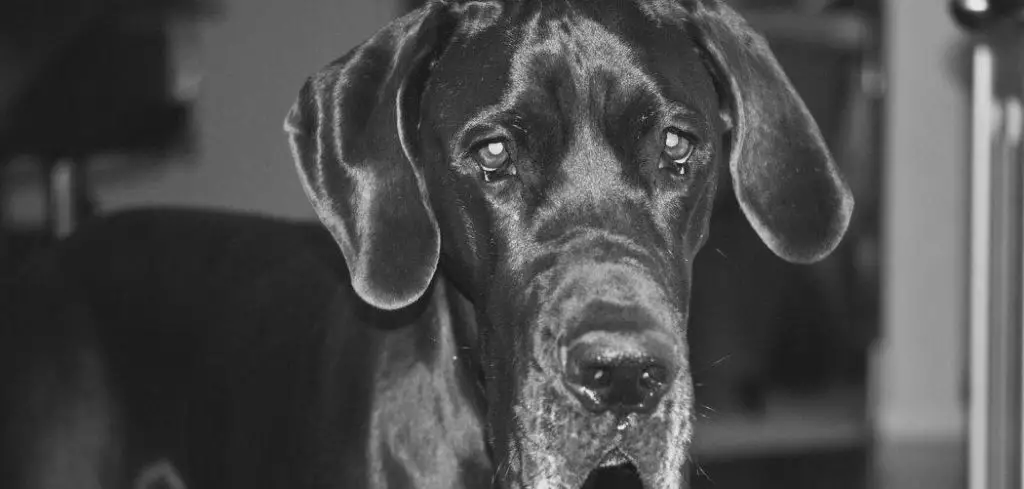Finding your old dog marking in the house can be frustrating and confusing. While marking is common in younger dogs for communication, it may signal behavioral changes or health concerns when it happens in senior dogs.
We outline the common reasons why an old dog may start marking in the house, what you can do, and when to seek veterinary help.
Old Dog Marking in House — Why It Happens
An old dog may begin marking indoors due to a mix of medical, behavioral, and age-related reasons. Health issues such as urinary tract infections, incontinence, or cognitive decline can all contribute. At the same time, stress, territorial instincts, or changes in routine may play a role.
Because house marking in older dogs often overlaps with medical problems, it’s important to look beyond training and consider whether your dog may be uncomfortable or unwell.

Old Dog Marking in The House: Common Causes
Urinary Tract Infections
Urinary tract infections (UTIs) are a frequent cause of house marking in senior dogs.
The infection irritates the bladder, making your dog feel the urge to urinate more often and sometimes in unusual places. You may notice small amounts of urine, straining, or licking around the genitals.
While it might look like intentional marking, it could be your dog’s way of trying to relieve discomfort. Left untreated, UTIs can spread to the kidneys and become serious.
Read more: Old Dog Peeing in the House (What’s causing it?)
Hormonal Changes
Even in old age, hormonal fluctuations can influence marking behavior, particularly in unneutered males.
A rise in testosterone or hormonal imbalances in females can trigger renewed marking, even if it hasn’t been an issue for years.
This type of marking tends to be territorial and often appears around doorways, furniture, or areas where other pets spend time.
Cognitive Dysfunction Syndrome (Dog Dementia)
Just like people, dogs can develop dementia as they age, known as Canine Cognitive Dysfunction.
Dogs with this condition may forget house training and start urinating in the home, sometimes in a way that looks like marking. Confusion, restlessness at night, and changes in interaction are often seen alongside this.
Because dementia-related marking is tied to memory and awareness decline, it often requires long-term management.
Stress and Anxiety
Stressful events—such as moving, new pets, loud noises, or changes in family dynamics—can trigger marking in senior dogs.
Even old dogs who have been house trained for years may revert to marking as a way of coping with insecurity. The scent provides comfort and reassurance in their environment.
If stress is the driver, you may also see pacing, whining, or clingy behavior along with the indoor marking.
Incontinence
As muscles controlling the bladder weaken with age, some dogs lose the ability to hold urine effectively.
This may appear as accidents around the home that resemble marking, but it’s actually involuntary leaking.
Incontinence often occurs while sleeping, resting, or after long periods without going outside. It’s important to distinguish this from intentional marking so that treatment is targeted correctly.
Territory and Habitual Marking
Old dogs sometimes continue marking indoors out of habit, especially if they were not consistently trained when younger.
This behavior may also return if a new pet is introduced or if neighborhood animals are sensed nearby.
While less medical in nature, territorial marking in old dogs can still be frustrating for owners and requires consistent management.
What to Do If Your Old Dog Is Marking in The House
If your old dog starts marking indoors, begin by observing when and where it happens. Keeping notes on timing, frequency, and triggers can help your vet or trainer identify the cause.
Clean marked areas thoroughly with enzymatic cleaners to remove odor and prevent repeat marking. Ordinary cleaners often fail to eliminate the scent fully, which can encourage your dog to mark again in the same spot.
Make sure your old dog is getting plenty of bathroom breaks throughout the day. Senior dogs often need to go outside more frequently, and giving them more opportunities can reduce accidents inside.
If stress is a factor, try to minimize environmental changes and provide your dog with comfort and reassurance. Calming routines, safe spaces, and gentle redirection can ease anxiety-driven marking.
Work closely with your veterinarian to rule out medical causes such as UTIs, incontinence, or hormonal imbalances. In some cases, medication or supplements may help manage the issue.
When to Call or Visit Your Vet
You should contact your veterinarian if your old dog’s marking is sudden, frequent, or accompanied by signs of pain. Straining to urinate, blood in the urine, or excessive licking of the genital area all indicate a likely infection or bladder issue.
If your dog leaks urine while resting or sleeping, this points more toward incontinence, which may benefit from medication.
Confusion, disorientation, or behavioral changes alongside house marking may suggest cognitive dysfunction. A vet can confirm this and recommend management strategies.
It’s also important to seek veterinary help if your dog’s marking is paired with increased thirst, weight changes, or lethargy. These can point to diabetes, kidney problems, or other systemic illnesses common in senior pets.
Read more: Old Dog Peeing in House: Time to Put Them Down?
Key Takeaway
Marking in the house by an old dog can be caused by medical issues like UTIs, incontinence, or dementia, as well as stress, hormonal changes, or territorial instincts.
While it can feel like a frustrating behavioral setback, marking in older dogs often has an underlying reason that can be addressed with the right care.
By monitoring your dog closely, maintaining patience, and working with your veterinarian, you can manage the problem and help your senior dog remain comfortable and secure in their later years.
